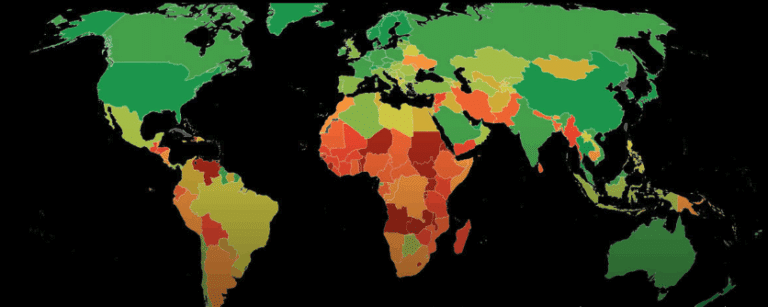Senate Democrats have recently announced an agreement on a $3.5 trillion budget plan. The plan, while still light on details, is purported to have several elements aimed at addressing climate change. Importantly, the plan appears likely to include some form of a national clean energy standard (CES) aimed at hitting the Biden administration’s goal of 80 percent clean energy by 2030. Dr. Harrison Fell, a senior research scholar and co-lead of the Center on Global Energy Policy’s power sector group, spoke with CGEP editors to answer questions related to CES design and performance. In addition, as the Senate Democrats’ budget plan may be passed via budget reconciliation, Dr. Fell discusses how the CES may be affected by that process.
Q. What is a CES and how is it different from other market-based environmental policies like an emissions tax or cap-and-trade?
A. The typical design of a CES, within the context of the electricity sector, is that a regulator—likely the Environmental Protection Agency—sets a clean-energy target rate (the ratio of megawatt hours (MWh) from “clean” sources to total MWhs sold) for the sector as a whole or for individual entities. Entities obligated to comply with the targets, such as electric utilities or other electricity-demand-serving entities (including those that provide electric service to customers but do not operate generation facilities), must then procure a quantity of clean energy or credits associated with clean energy generation, such that the ratio of MWhs of clean energy procured plus clean energy credits to MWhs of electricity sold is equal to their assigned target rate. The CES often has a market component: Entities have the ability to trade clean energy credits, and the credits are created when the clean energy sources generate electricity. Regulated entities with more credits than needed to meet their target rate can sell those credits to entities that would otherwise be under their clean energy target rate.
The CES is different from emission pricing policies, like an emissions tax or cap-and-trade, in several ways. First, and most important, the CES does not put a price on emissions, rather it creates a market for clean energy credits. As such, depending on the design features, a CES may effectively provide a subsidy to some low-emitting generation source, whereas an emissions pricing policy always taxes any emitting source. The end result of this difference is that CES policies tend to provide a less cost-effective means of hitting a given emissions reduction target when compared to emission pricing policies. This is because by not pricing the emissions directly the CES tends to lead to a suboptimal transition from dirtier to cleaner generating sources.
Q. What are some of the key design elements of a CES policy?
A. The single most important design feature beyond the clean energy target rate is the baseline emissions rate that determines clean energy crediting. The regulator setting up a true CES can set the baseline rate at zero, meaning only generation sources that are emissions free (or perhaps emissions neutral) can generate clean energy credits. More likely, regulators will allow, at least initially, some form of partial crediting for relatively cleaner sources of generation. For example, if the baseline rate is 0.75 tons of carbon dioxide (tCO2) per MWh, then natural gas plants, with average emission rates of about 0.5 tCO2/MWh, would receive partial crediting (in this case, 0.25 credits per MWh of generation), but coal plants, with emission rates closer to 1.0 tCO2/MWh, would not generate credits. This example also highlights that the CES policy’s definition of “clean energy” is really regulator-determined.
Other key elements to consider are who is deemed an obligated entity and whether the regulator enforces a common standard or entity-specific standard. As discussed earlier, a CES policy is often proposed with the obligated entity being a utility that sells power to some end users, but it could also be designed such that the power generators are the obligated entities. The difference between who is assigned the compliance obligation, combined with the target rates the individual entities must meet, can have drastically different impacts on who bears the burden of the policy costs and how early adopters of clean energy are credited.
Q. How might a CES proposal be altered to make it more likely to survive the reconciliation process, and how could those changes affect the policy’s performance?
A. Reconciliation generally requires that each provision of the bill has an implication for the federal budget. A traditional CES design could find challenges from a reconciliation perspective, because a CES can be relatively sector-contained, with rent transfers among actors in the electricity sector, and, therefore, not creating major federal budget implications. A CES is different from an emissions tax, which would obviously generate tax revenues and thus have budget implications. The work-around for the CES under reconciliation could be the introduction of federal-government-sponsored incentives (e.g., subsidies) for utilities that over-comply (get clean energy rates above their target rate) and penalties (e.g., taxes) for utilities that under-comply. The implication for performance depends on how these subsidies and penalties are enacted.
Such a subsidy and penalty plan is quite different from a traditional CES, and could have some efficiency implications. First, if the plan is not rate-based but instead based on additions of clean energy, it may limit the compliance options of a utility. For example, under a traditional rate-based CES, a utility could perhaps promote energy efficiency or energy conservation among its customers, which would reduce the total amount of energy it needs to generate and allow it to reduce/retire its “dirty” generation. If the utility’s total clean energy generation remains the same but its total generation is reduced, its clean energy rate will rise, allowing it to meet a higher clean energy rate target.
[1] If the reconciliation CES is purely driven by crediting new clean energy, then this energy-efficiency type of compliance strategy may not be possible. It also remains to be seen how existing clean energy may be credited if at all under such a reconciliation CES. Not crediting existing clean energy may disincentivize maintenance and operational efficiency at these facilities. Finally, the actual dollar value of the subsidy for new clean energy and penalty for not meeting new clean energy goals will be extremely important for determining the effectiveness of the reconciliation CES. Specifically, if the subsidy or penalty is too low, we could see undercompliance (too little clean energy), and if the subsidy or penalty is too high, we could get overcompliance, passing on additional costs to taxpayers, utilities, and/or ratepayers.
Q. How would a CES affect consumers and address environmental justice concerns?
A. The impact of the CES on consumers will depend importantly on who the compliance-obligated entity is and how those target rates are set. If it is electric utilities and other electricity-demand-serving entities, then the customers of those utilities that have hard-to-meet targets will likely see electricity bill increases, and those with easier-to-meet targets will see less of an effect and perhaps even see their bill reduced. In general, most policy analyses find electricity price increases are lower under a CES than for comparable emission taxes. This is both good and bad: good for consumers but bad for the overall efficiency of the policy because the higher price of electricity would have provided a signal to consumers to reduce consumption of an emissions-generating activity. However, under a reconciliation CES it appears that the cost of compliance will be transferred from the ratepayers to the federal government (and subsequently the tax base). Again, this lack of an electricity price response makes achieving an emissions reduction target more expensive. Whether or not it is a more progressive way to pay for the energy transition will depend on how a given utility sets its electricity rates.
In terms of environmental justice angles, a CES could be designed to particularly reduce emission in localities with a high percentage of people from underserved populations. However, with tradeable clean energy credits, undesirable emission hot-spots may still occur. Modeling of CES policies as well as of emission pricing policies, though, generally finds emission reduction benefits across a wide swath of demographics.
Q. What are some additional considerations overlooked in the CES discussion?
A. One issue I’m particularly interested in is that, while it is clear how a CES would incentivize the increase in clean energy production, where this additional capacity will be placed is also important. Specifically, a CES policy that credits clean energy production will incentivize, in part, the siting of renewable generation in places with high-generation potential (e.g., where it’s windiest for wind generation and sunniest for solar). While that may be good for generating more clean energy, it might not be the best from an emissions reduction standpoint or a market value standpoint. Take wind energy, for example. The federal government subsidizes wind energy production through a production tax credit (PTC), which gives a tax credit per MWh of generation. As a result, many wind generators have been sited where they can generate the most wind energy (maximize the value of the PTC), which in the US happens to be in the mid-continent region.
The problem with that is population densities are lower in the mid-continent, so power must be transmitted farther to reach high electricity demand centers. In addition, wind generation, without sufficient transmission capacity, will tend to offset more fossil generation from those coal and gas plants nearby, but the environmental and human health benefits of reducing emissions of some pollutants from those fossil fuel plants in less-population-dense areas is lower than reducing the emissions from plants right outside of metropolitan areas.[2] So, generation siting can matter a lot when determining the total benefits of the policy.
[1] If you would like to learn more about how energy efficiency programs can be incorporated into a rate-based standard policy like a CES, see Dr. Fell and co-authors’ paper “Energy Efficiency and Emissions Intensity Standards” in the Journal of Association of Environmental and Resource Economists (2017, vol. 4, S1).
[2] To learn more about how the siting of renewable energy in less populated regions combined with limited transmission capacity can negatively impact the environmental and human health benefits of renewable energy, see Dr. Fell and co-authors’ paper “Emissions, Transmission, and the Environmental Value of Renewable Energy” in the American Economic Journal: Economic Policy (2021, vol. 13, 2).





